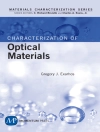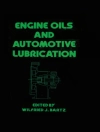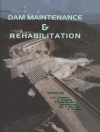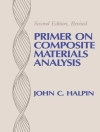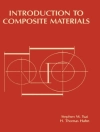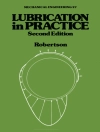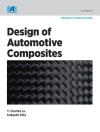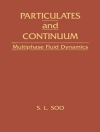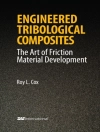An advanced, practical approach to the first and second laws of thermodynamics
Advanced Engineering Thermodynamics bridges the gap between engineering applications and the first and second laws of thermodynamics. Going beyond the basic coverage offered by most textbooks, this authoritative treatment delves into the advanced topics of energy and work as they relate to various engineering fields. This practical approach describes real-world applications of thermodynamics concepts, including solar energy, refrigeration, air conditioning, thermofluid design, chemical design, constructal design, and more. This new fourth edition has been updated and expanded to include current developments in energy storage, distributed energy systems, entropy minimization, and industrial applications, linking new technologies in sustainability to fundamental thermodynamics concepts. Worked problems have been added to help students follow the thought processes behind various applications, and additional homework problems give them the opportunity to gauge their knowledge.
The growing demand for sustainability and energy efficiency has shined a spotlight on the real-world applications of thermodynamics. This book helps future engineers make the fundamental connections, and develop a clear understanding of this complex subject.
* Delve deeper into the engineering applications of thermodynamics
* Work problems directly applicable to engineering fields
* Integrate thermodynamics concepts into sustainability design and policy
* Understand the thermodynamics of emerging energy technologies
Condensed introductory chapters allow students to quickly review the fundamentals before diving right into practical applications. Designed expressly for engineering students, this book offers a clear, targeted treatment of thermodynamics topics with detailed discussion and authoritative guidance toward even the most complex concepts. Advanced Engineering Thermodynamics is the definitive modern treatment of energy and work for today’s newest engineers.
表中的内容
1 The First Law
1.1 Terminology
1.2 Closed Systems
1.3 Work Transfer
1.4 Heat Transfer
1.5 Energy Change
1.6 Open Systems
1.7 History
References
Problems
2 The Second Law
2.1 Closed Systems
2.2 Open Systems
2.3 Local Equilibrium
2.4 Entropy Maximum and Energy Minimum
2.5 Carathéodory’s Two Axioms
2.6 A Heat Transfer Man’s Two Axioms
2.7 History
References
Problems
3 Entropy Generation, or Exergy Destruction
3.1 Lost Available Work
3.2 Cycles
3.3 Nonflow Processes
3.4 Steady-Flow Processes
3.5 Mechanisms of Entropy Generation
3.6 Entropy-Generation Minimization
References
Problems
4 Single-Phase Systems
4.1 Simple System
4.2 Equilibrium Conditions
4.3 The Fundamental Relation
4.4 Legendre Transforms
4.5 Relations between Thermodynamic Properties
4.6 Partial Molal Properties
4.7 Ideal Gas Mixtures
4.8 Real Gas Mixtures
References
Problems
5 Exergy Analysis
5.1 Nonflow Systems
5.2 Flow Systems
5.3 Generalized Exergy Analysis
5.4 Air-Conditioning
References
Problems
6 Multiphase Systems
6.1 The Energy Minimum Principle
6.2 The Stability of a Simple System
6.3 The Continuity of the Vapor and Liquid States
6.4 Phase Diagrams
6.5 Corresponding States
References
Problems
7 Chemically Reactive Systems
7.1 Equilibrium
7.2 Irreversible Reactions
7.3 Steady-Flow Combustion
7.4 The Chemical Exergy of Fuels
7.5 Combustion at Constant Volume
References
Problems
8 Power Generation
8.1 Maximum Power Subject to Size Constraint
8.2 Maximum Power from a Hot Stream
8.3 External Irreversibilities
8.4 Internal Irreversibilities
8.5 Advanced Steam-Turbine Power Plants
8.6 Advanced Gas-Turbine Power Plants
8.7 Combined Steam-Turbine and Gas-Turbine Power Plants
References
Problems
9 Solar Power
9.1 Thermodynamic Properties of Thermal Radiation
9.2 Reversible Processes
9.3 Irreversible Processes
9.4 The Ideal Conversion of Enclosed Blackbody Radiation
9.5 Maximization of Power Output Per Unit Collector Area
9.6 Convectively Cooled Collectors
9.7 Extraterrestrial Solar Power Plant
9.8 Climate
9.9 Self-Pumping and Atmospheric Circulation
References
PROBLEMS
10 Refrigeration
10.1 Joule-Thomson Expansion
10.2 Work-Producing Expansion
10.3 Brayton Cycle
10.4 Intermediate Cooling
10.5 Liquefaction
10.6 Refrigerator Models with Internal Heat Leak
10.7 Magnetic Refrigeration
References
Problems
11 Entropy-Generation Minimization
11.1 Competing Irreversibilities
11.2balanced Counterflow Heat Exchangers
11.3storage Systems
11.4power Maximization or Entropy-Generation Minimization
11.5from Entropy-Generation Minimization to Constructal Law
References
Problems
12 Irreversible Thermodynamics
12.1 Conjugate Fluxes and Forces
12.2 Linearized Relations
12.3 Reciprocity Relations
12.4 Thermoelectric Phenomena
12.5 Heat Conduction in Anisotropic Media
12.6 Mass Diffusion
References
Problems
13 The Constructal Law
13.1 Evolution
13.2 Mathematical Formulation Of The Constructal Law
13.3 Inanimate Flow Systems
13.4 Animate Flow Systems
13.5 Size and Efficiency: Economies of Scale
13.6 Growth, Spreading and Collecting
13.7 Asymmetry and Vascularization
13.8 Human Preferences for Shapes
13.9 The Arrow of Time
References
Problems
关于作者
ADRIAN BEJAN is the J.A. Jones Distinguished Professor of Mechanical Engineering at Duke University, and an internationally-recognized authority on thermodynamics. The father of the field of design in nature or constructal law, which accounts for the universal natural tendency of all flow systems to evolve freely toward easier flow access, his research covers a broad range of topics in thermodynamics, heat transfer, fluid mechanics, convection, and porous media. Professor Bejan has been awarded eighteen honorary doctorates by universities in eleven countries, and is the recipient of numerous awards including the Max Jacob Memorial Award (ASME & AICh E), the Worcester Reed Warner Medal (ASME), and the Ralph Coats Roe Award (ASEE). The author of over 630 journal articles, he is considered one of the 100 most-cited engineering researchers of all disciplines, in all countries.


